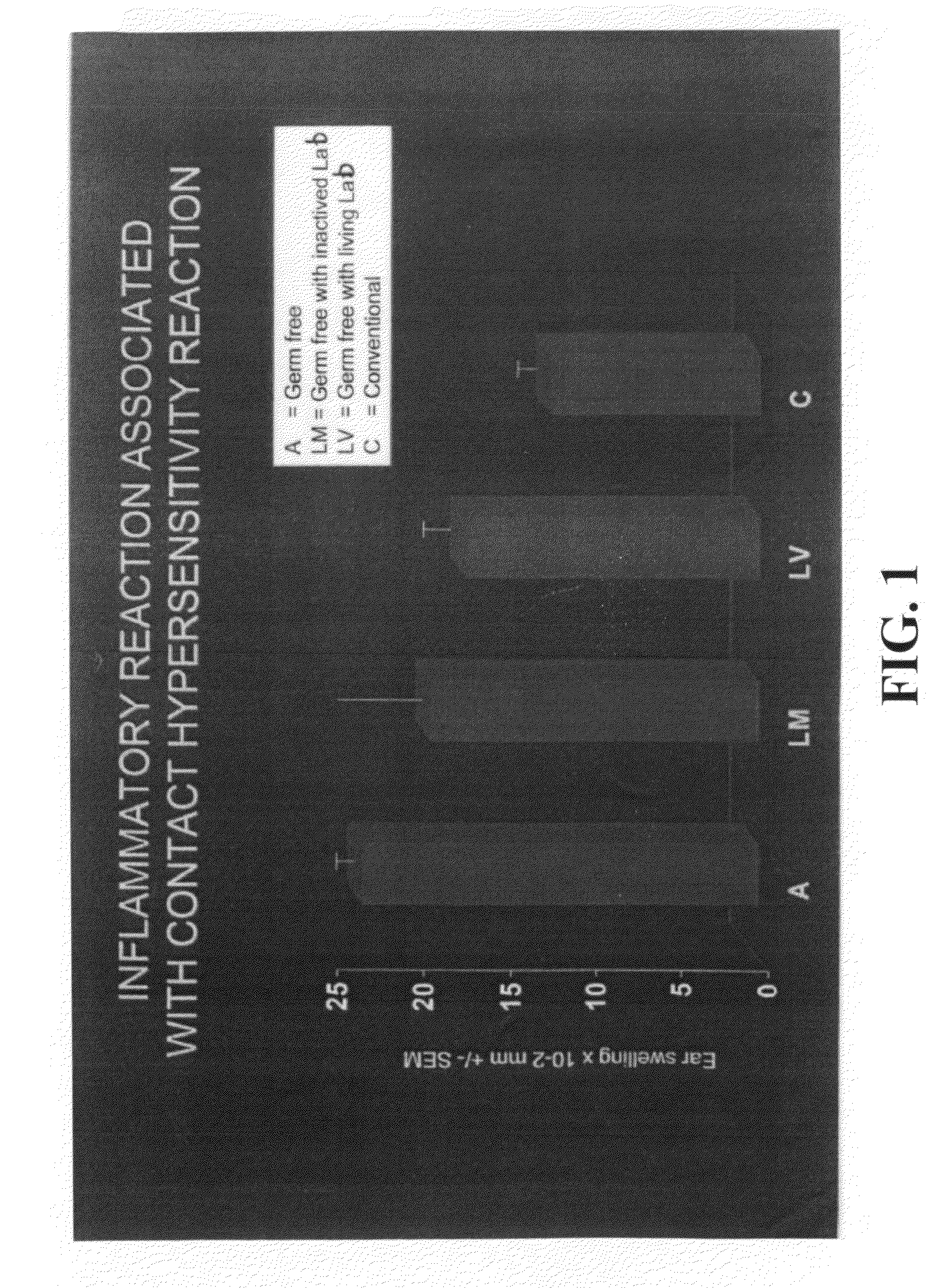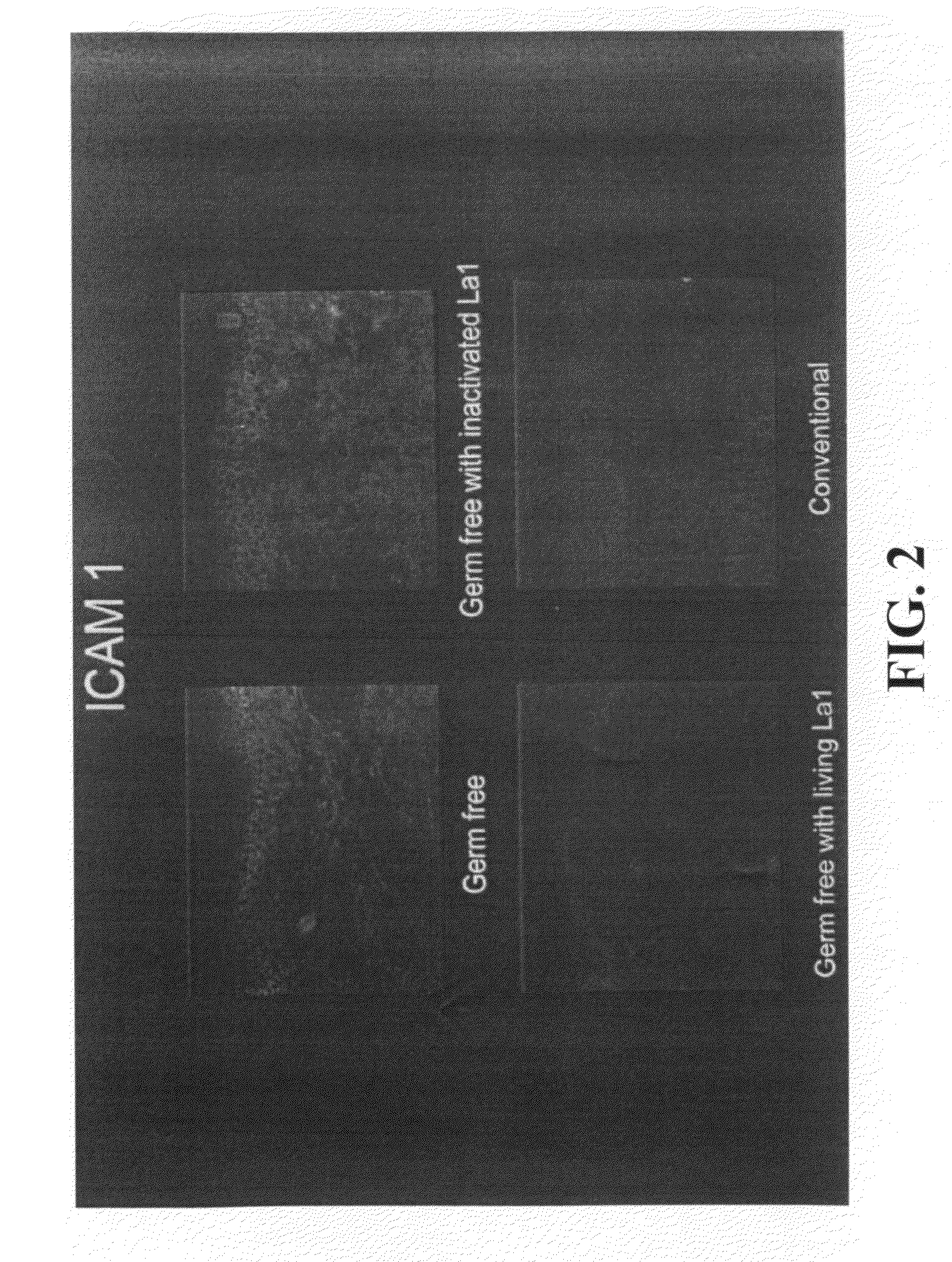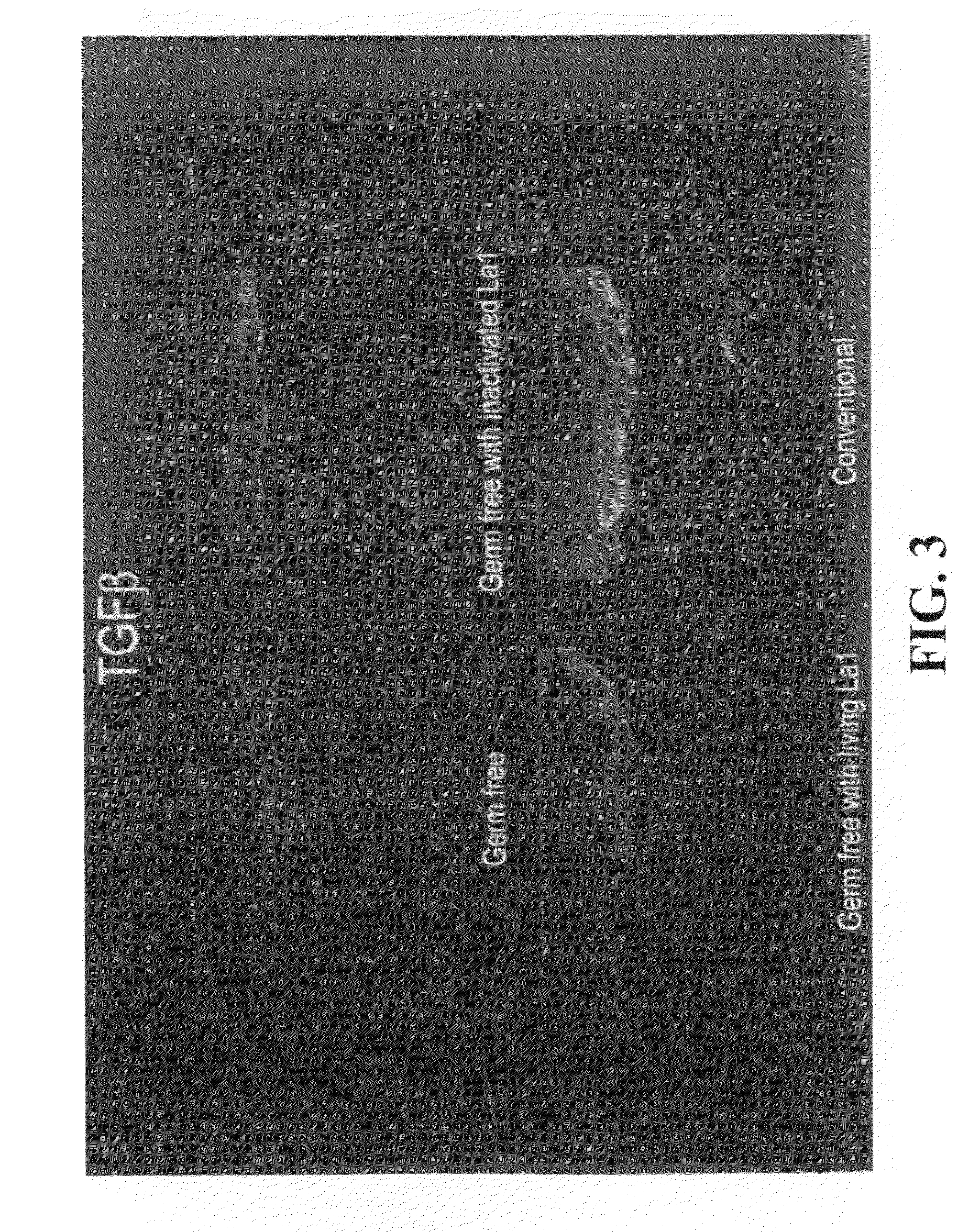Use of probiotic lactic acid bacteria for balancing the skin's immune system
a technology of skin immune system and probiotics, applied in the field of skin immune system balancing, can solve the problems of malignant cells escaping the immune system, accelerated skin ageing, and inability to perform the usual surveillance function, etc., to achieve the effect of reducing the individual's tendency to develop inflammatory and/or irritant reactions, and prophylaxis or treatment of undesirables
- Summary
- Abstract
- Description
- Claims
- Application Information
AI Technical Summary
Benefits of technology
Problems solved by technology
Method used
Image
Examples
example 1
Balancing Hypersensitivity Reactions
[0037]In this experiment the activity of probiotics (dead or alive) on the skin's immune system under a chemical stress situation was evaluated. In this respect, animals were sensitized with a chemical compound (dinitrochlorobenzene) and the effect of such a (chemical) stress situation in axenic animals was compared to the effect in animals, the gut of which contained probiotics only. The level of a hypersensitivity reaction developed against DNCB was evaluated by several parameters (see below).
[0038]For the experiments male mice C3H (LPS+), germ free and supplied by the Research Center Orleans (CNRS Orléans, France) were assembled in four groups of eight mice each. The groups reflected different statuses of the gut and were designated “C” (group with a Conventional (normal) microflora), “LV” (group with a microflora consisting of LiVing Lactic acid bacteria only), “LD” (group fed with dead probiotics (Lactobacillus Dead) and “A” (germ free (Axeni...
example 2
[0057]In this experiment the UV-light induced suppression of the immune system in the skin, as perceptible by an diminished development of a hypersensitivity reaction, was used to investigate the potential of probiotics to essentially restore the immune system's capability to respond to stress situations, such as being exposed to an allergenic substance, in a normal way.
[0058]Three test groups of animals were set up. The first group of animals was treated with a compound known to elicit hypersensitive reactions, dinitrofluorobenzene (DNFB), and the reaction of the skin's immune system thereto was determined. The second group was subjected to UV irradiation prior to being exposed to the compound above and the effect of said exposure on the immune reaction under these conditions was assessed. The third group received probiotics in living or inactivated form, or a culture supernatant thereof, and was exposed to UV-light. In this group the effect of the probiotics on the restoration of ...
PUM
| Property | Measurement | Unit |
|---|---|---|
| stress | aaaaa | aaaaa |
| physical | aaaaa | aaaaa |
| biological stress | aaaaa | aaaaa |
Abstract
Description
Claims
Application Information
 Login to View More
Login to View More - R&D
- Intellectual Property
- Life Sciences
- Materials
- Tech Scout
- Unparalleled Data Quality
- Higher Quality Content
- 60% Fewer Hallucinations
Browse by: Latest US Patents, China's latest patents, Technical Efficacy Thesaurus, Application Domain, Technology Topic, Popular Technical Reports.
© 2025 PatSnap. All rights reserved.Legal|Privacy policy|Modern Slavery Act Transparency Statement|Sitemap|About US| Contact US: help@patsnap.com



